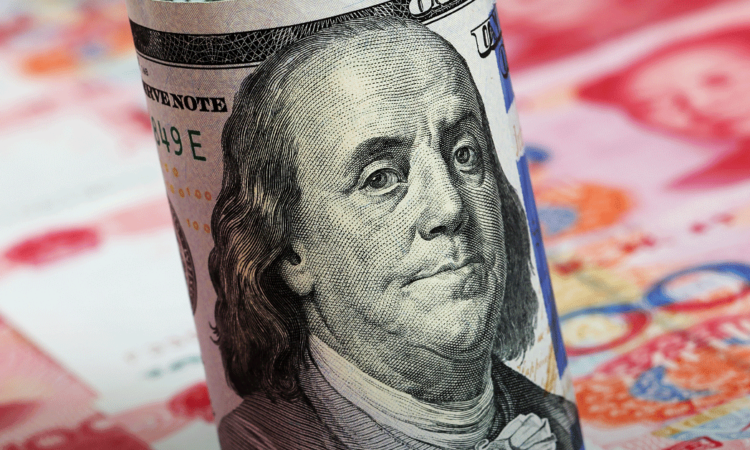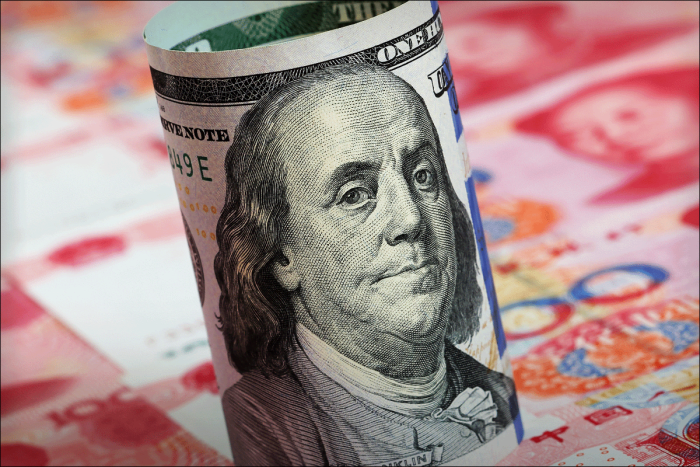
The only constant is change. And a strong U.S. dollar.
Well, the second part of that statement may be changing. We’ve had an exceptionally strong greenback since the Covid recovery began. But recently, Asian currencies in particular have been rallying, easing pressure on central banks in the region.
The U.S. dollar is today touching a low for the year, a relatively rapid descent since a recent peak in late June. Since then, it’s down 4.1%.
Asian currencies, on the flipside, are just reaching a seven-month high, with the Bloomberg Asia Dollar Index standing at its highest level since January.
The Malaysian ringgit has been a standout performer, up 8.6% against the U.S. dollar since mid-April. The central bank last week reported a surprise 5.9% jump in second-quarter gross domestic product, an acceleration from the 4.2% pace in the first quarter.
The Korean won has advanced 4.3% since late June. Economists are easing back on predictions that the central Bank of Korea will cut rates, after a jump in property prices.

The last sustained U.S. dollar weakness was a decade ago, but it’s been exceptionally strong since 2021.
Shutterstock
There are other country-specific reasons for a little currency strength. For instance, in Thailand, Paetongtarn Shinawatra has just been sworn in as the country’s youngest prime minister to date. Daughter of Thaksin Shinawatra, the 37-year-old, steps in after yet another action from the Thai Constitutional Court, which removed the prior incumbent after an ethics investigation.
The election of Shinawatra in a house vote should restore greater balance to the political scene. Still, Paetongtarn has never before served in government, so it’s a gamble to push her forward. Coups and court rulings have disrupted Thai politics over the course of a chaotic two decades.
The Thai baht has undone its heavy losses and stands at levels similar to how it began the year. But that’s only after a 7.5% rally since late June. If not for that recent run, the Thai currency would still be carrying significant losses in 2024.
More than any geopolitical or economic concerns, though, the Asian currency strength stems from a reversal of recent trends that helped drive the Japanese yen to levels last seen in 1986.
I noted in my last column that the underlying drivers for the Japanese yen and U.S. dollar have changed. I wrote then that I believe we were past the period of maximum weakness for the yen, and past peak U.S. dollar.
The yen weakness has been extreme, since the interest-rate differential with the U.S. dollar was the greatest so long as the central Bank of Japan (BOJ) maintained negative interest rates. The BOJ has now raised rates twice this year and looks set to raise again before year-end in its next move.
The Fed has lived up to its mantra to keep rates “higher for longer.” But markets now anticipate that rates will finally fall, perhaps in September, but surely before the calendar ticks over into 2025.
The last real spell of U.S. dollar weakness was in 2014, a decade back. But the currency really began its period of unusual strength in late 2021, just ahead of the U.S. Federal Reserve beginning to raise rates in March 2022.
The rapid rate rise from 0.25% in February 2022 to 5.5% in July 2023 ran counter to the continued easy money policy in many Asian nations, where inflation hadn’t become a problem and sustaining economic growth is the main concern.
“King Dollar” won’t lose its crown. But we may see a period heading into the first Fed rate cut and into next year where we are in more of a “Prince Dollar” position.
That’s good news for Asian central banks, which have attempted to set local rates based on their local economic and inflation specifics. But it has provoked currency weakness, which destabilizes assumptions for exporters, and potentially feeds into inflation by raising the cost of imports.
Expect the U.S. dollar to continue to lose ground, and expect Asian currencies to continue to gain ground. I would normally recommend that U.S.-based investors hedge any currency exposure on overseas holdings. But there’s a case for holding unhedged positions in, say, Asian stocks that would benefit from those currency moves.
